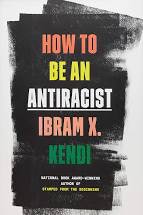CHICAGO — On a recent Saturday night, a crowd began forming early at The Book Cellar, cramming into one of the city’s last independent bookstores.
Jeff Donohue had planned to drop his wife Cathy off to hear Dr. Ibram X. Kendi’s talk and return two hours later to pick her up. But that was before she made the public pronouncement for all to hear.
“You need to sit down and learn something,” Cathy told her husband, who appeared agitated and slightly embarrassed by the forceful directive.
With that, Jeff begrudgingly took a seat next to his wife, unaware of how Kendi’s talk and his “book” would forever change his outlook.
That’s the story that has been recounted across the nation as Americans grapple with How to Be an Antiracist, the 305-page New York Times bestseller that has catapulted Kendi — already a National Book Award winner, professor and founding director of the Antiracist Research and Policy Center at American University — to greater heights.
Part memoir but firmly grounded in history and current events, the reader comes to understand how Kendi’s ideas about race and racism were shaped by his years growing up in northern Virginia, his time as an undergraduate at a historically Black university in Florida, and later as a Ph.D. student in African-American studies at Temple University, the first institution in the nation to offer a Ph.D. in the discipline.
“This book is ultimately about the basic struggle we’re in, the struggle to be fully human and to see that others are fully human,” Kendi writes in the introduction to the book. “I share my own journey of being raised in the dueling racial consciousness of the Reagan-area Black middle class, then right-turning onto the ten-lane highway of anti-Black-racism — a highway mysteriously free of police and free on gas — and veering off onto the two-lane highway of anti-White racism, where gas is rare and police are everywhere, before finding and turning down the unlit dirt road of antiracism.”
















